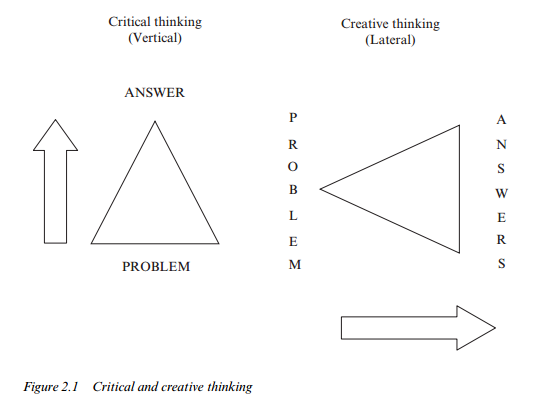No matter what the situation or job position an individual will at times be faced with insurmountable problems. Based on how we think we will let these problems bother us to a greater or lesser degree. For the doing person, who manipulates the outcome directly it is essential a problem is overcome, we don’t want such a person to give up until task is achieved. While for the manager/ leader, who achieves aims through manipulating other personnel it is vital that they “kill it quickly,” and think laterally to avoid problems and redeploy resources so that they effectively by pass the bottlenecks.
Generally as we go up the management hierarchy, Critical thinking diminishes in terms of its day to day value. After all it would defy logic that a senior manager would be able to solve a problem through critical analysis any more effectively than a dedicated member of the technical staff who had understood and worked on a problem directly for years.
The manager usually reverts to lateral thinking to solve the problem. Essentially they can get round the problem in the way that critical analysis constrains others from doing.
In regards to lateral thinking we identify the key aim and link that with the key outcome and essentially bypass the problem.
In order to function normally we need both trains of thought, however as we industrialise labour so the balance of these mechanisms are changed. Essentially a manager in more and more senior positions should be able to think more and more laterally, while articulating their suggestions to their staff through a series of explanations delivered at a critical level. A technical hands on person needs to be more and more critical in their thinking, no one wants the person building the product, not to build it…
Sometimes simply seeing the problem through a new lens brings new vision and understanding.
Image source: Kirby (2004:17)
Reference
Kirby, D. A. (2004). Entrepreneurship education: can business schools meet the challenge?. Education+ training, 46(8/9), 510-519.



Recent Comments